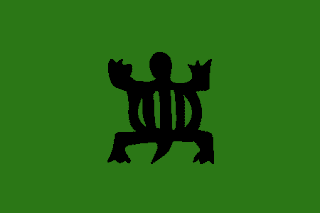Following the declaration of war in 1748, the United Kingdom found itself fighting The United Provinces of America once more. Eager to show the world that TUPA was only an upstart revolutionary state, George II diverted as many as funds as possible to the war effort, postponing the planned expansion of many overseas colonies. The UK was still nursing its wounds following the American War of Independence in the 1730s and popular opinion was against continued conflict in the Americas. Many British citizens felt that they should abandon their colonies in the Americas anyway as Britain was facing its own domestic issues. However, the lack of a parliament and organized form of democracy in the United Kingdom meant that these voices were unheard by the monarchy who went ahead with the war.
George I had died in 1746 of natural causes. Heir to the throne was George II who was seen as unfit to rule by the majority of the population of the United Kingdom. One of the main reasons for this was his lavish lifestyle and his fondness for women and parties. Another reason was his almost complete disregard for the wellbeing of his citizens residing anywhere other than England. The Scottish, Welsh and Irish, already seen as second class citizens, felt even more neglected and ignored by the state than they had ever done before. This would cause problems for the nation in future.
The British side of the war began with the North-Eastern Counteroffensive. Having already lost large tracts of land in their Canadian territories, George II saw that it was necessary to strike at the American heart before they launched a second offensive in Canada. British troops landed on the East Coast of North America to the north of Boston. The plan was to move south, taking Boston and occupying the whole region of Massachusetts. Following that, they would move south towards New York, taking Connecticut in the process. From there, British troops would move even further south to seize Washington in the province of Maryland.
George II did not see how the plan could fail. He saw it as an ideal way to put TUPA out of action as quickly as possible to avoid another long and drawn out war which Britain could not afford. Sadly, lack of foresight and bad intelligence led to the campaign ending in disaster for the United Kingdom. Data provided by British intelligence officers on the defences of the city of Boston was incorrect causing British losses to skyrocket. After a lengthy siege and heavy casualties, British troops were able to take Boston but faced a hostile population. British regiments in the area continued to report casualties and fatalities even after TUPA troops had left the area as the population had formed militias and resistance groups.
George II, growing impatient with the lack of progress, ordered his generals to stage another offensive, this time moving to take New York. British generals and officers came up with a new plan, seeing that an advance through Connecticut would result in catastrophic losses. Instead, the British forces would move further west before moving south to get to New York by way of Albany. They would then follow the Hudson River down to New York. However, British troops were surprised to find that Albany too was heavily defended. After multiple assaults, British troops routed and retreated. TUPA troops then crushed the remaining British forces at the Battle of Rotterdam. Britain would not launch another offensive for the rest of the war.
Facing rising tensions at home and defeat in the Americas, George II requested a peace treaty with TUPA in 1751 which they accepted. The terms of the treaty resulted in Britain accepting defeat in the war and losing territory (but not all their territories) in Canada. The war would show to the world that the United Kingdom was unable to defend its overseas holdings, making it an ideal target for foreign expansion. The war would give birth to multiple independence movements across Canada and Britain’s overseas territories. One such independence movement would start in the British Isles, taking George II by surprise. Some years after the war, the United Kingdom would cease to exist and would lose many of its colonies to rebellions.







